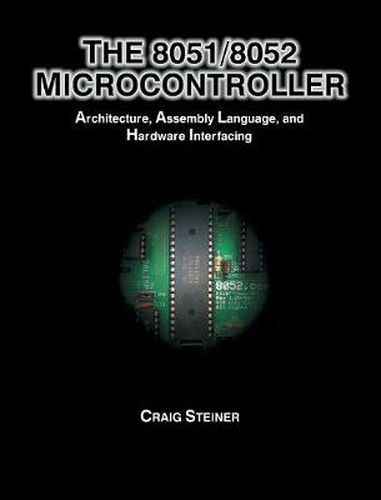Readings Newsletter
Become a Readings Member to make your shopping experience even easier.
Sign in or sign up for free!
You’re not far away from qualifying for FREE standard shipping within Australia
You’ve qualified for FREE standard shipping within Australia
The cart is loading…






This title is printed to order. This book may have been self-published. If so, we cannot guarantee the quality of the content. In the main most books will have gone through the editing process however some may not. We therefore suggest that you be aware of this before ordering this book. If in doubt check either the author or publisher’s details as we are unable to accept any returns unless they are faulty. Please contact us if you have any questions.
This book was written with the novice or intermediate 8052 developer in mind. Assuming no prior knowledge of the 8052, it takes the reader step-by-step through the architecture including discussions and explanations of concepts such as internal RAM, external RAM, Special Function Registers (SFRs), addressing modes, timers, serial I/O, and interrupts. This is followed by an in-depth section on assembly language which explains each instruction in the 8052 instruction set as well as related concepts such as assembly language syntax, expressions, assembly language directives, and how to implement 16-bit mathematical functions. The book continues with a thorough explanation of the 8052 hardware itself, reviewing the function of each pin on the microcontroller and follows this with the design and explanation of a fully functional single board computer–every section of the schematic design is explained in detail to provide the reader with a full understanding of how everything is connected, and why. The book closes with a section on hardware interfacing and software examples in which the reader will learn about the SBCMON monitor program for use on the single board computer, interfacing with a 4x4 keypad, communicating with a 16x2 LCD in direct-connect as well as memory-mapped fashion, utilizing an external serial EEPROM via the SPI protocol, and using the I2C communication standard to access an external real time clock.
The book takes the reader with absolutely no knowledge of the 8052 and provides him with the information necessary to understand the architecture, design and build a functioning circuit based on the 8052, and write software to operate the 8052 in assembly language.
$9.00 standard shipping within Australia
FREE standard shipping within Australia for orders over $100.00
Express & International shipping calculated at checkout
This title is printed to order. This book may have been self-published. If so, we cannot guarantee the quality of the content. In the main most books will have gone through the editing process however some may not. We therefore suggest that you be aware of this before ordering this book. If in doubt check either the author or publisher’s details as we are unable to accept any returns unless they are faulty. Please contact us if you have any questions.
This book was written with the novice or intermediate 8052 developer in mind. Assuming no prior knowledge of the 8052, it takes the reader step-by-step through the architecture including discussions and explanations of concepts such as internal RAM, external RAM, Special Function Registers (SFRs), addressing modes, timers, serial I/O, and interrupts. This is followed by an in-depth section on assembly language which explains each instruction in the 8052 instruction set as well as related concepts such as assembly language syntax, expressions, assembly language directives, and how to implement 16-bit mathematical functions. The book continues with a thorough explanation of the 8052 hardware itself, reviewing the function of each pin on the microcontroller and follows this with the design and explanation of a fully functional single board computer–every section of the schematic design is explained in detail to provide the reader with a full understanding of how everything is connected, and why. The book closes with a section on hardware interfacing and software examples in which the reader will learn about the SBCMON monitor program for use on the single board computer, interfacing with a 4x4 keypad, communicating with a 16x2 LCD in direct-connect as well as memory-mapped fashion, utilizing an external serial EEPROM via the SPI protocol, and using the I2C communication standard to access an external real time clock.
The book takes the reader with absolutely no knowledge of the 8052 and provides him with the information necessary to understand the architecture, design and build a functioning circuit based on the 8052, and write software to operate the 8052 in assembly language.